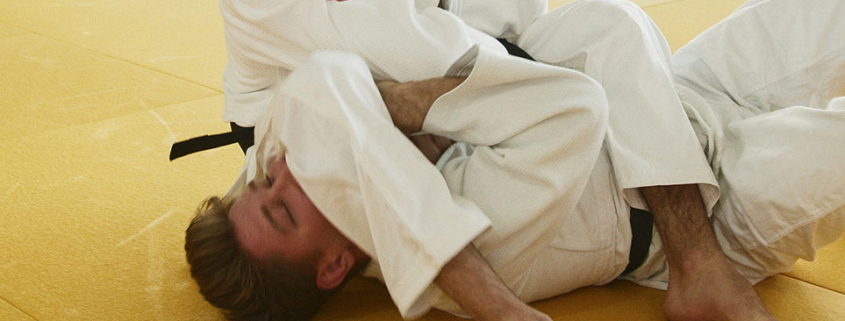Influence of Dynamic Tape Global on the functionality of the quadriceps in non-specific pain in the judo athlete.
Sales, CR
Dissertação de Mestrado em Fisioterapia Desportiva apresentado à Universidade Fernando Pessoa, Porto, 2013.
https://bdigital.ufp.pt/bitstream/10284/5488/1/DM_30710.pdf
37 Judo athletes with non-specific knee pain were evaluated for static and dynamic balance, strength, flexibility and pain. Volunteers were submitted to the Standing Stork Test (SST), Y Balance Test (YBT), Four Square Step Test (FSST), Single Leg Hop Test (SLHT), Lower Limb Flexion Test (TFMI) and Extension Members Test (TEMI). After the tests, they answered to the Numerical Pain Scale (END).
No significant differences were found for the SST test (p=0.6794), however the YBT, SLHT, TFMI, TEMI and END (p<0.0001), as well as the FSST test (p = 0.0026) showed significant statistical differences, suggesting that the implementation of DT produced positive effects on the performance of the athletes.
Dynamic Taping improved semi-dynamic and dynamic balance, flexibility and pain.
It must be noted here that applying the same technique to a cohort of subjects with ‘non specific’ knee pain does not follow our general recommendations. Ideally, Dynamic Taping should be applied to address a deficit identified on assessment and demonstrated to be an important contributing factor in this patient (and ideally by the research). For example, if quadriceps weakness is identified and poor ability to accept load onto the leg during a single leg squat or landing task is observed, then Dynamic Taping could be applied to aid in load acceptance and knee control which may reduce loading on sensitised or damaged structures responsible in part for the pain being experienced. Ideally, those structures, their state and the pain processes at play should also be identified.
Nevertheless, this study does show that assisting knee extension control and load reduction in this group has resulted in improved dynamic balance, pain and flexibility. This may then allow appropriate reintroduction of loading exercises to build sufficient capacity such that the taping is not required. Further studies comparing with Dynamic Tape Global applied in the lengthened position with no tension and with a more specific and homogenous subgroup of subjects would provide further insight into the mechanisms and appropriate indications and use of Dynamic Tape Global.

